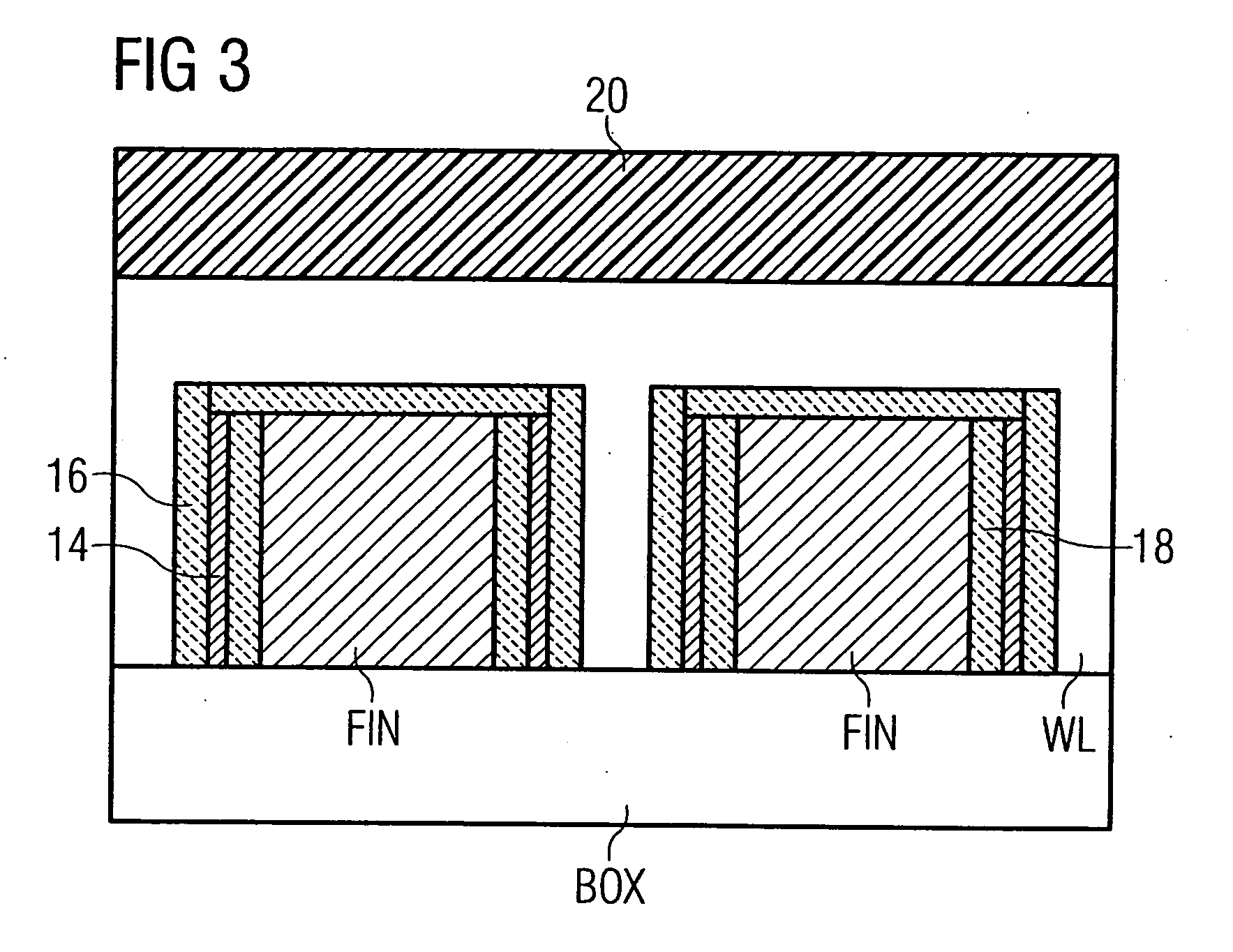Word and bit line arrangement for a FinFET semiconductor memory
a technology of semiconductor memory and word and bit line, which is applied in the field of semiconductor memory, to achieve the effect of high storage density of 2f2 per bit, faster access time to each memory cell, and improved scalability
- Summary
- Abstract
- Description
- Claims
- Application Information
AI Technical Summary
Benefits of technology
Problems solved by technology
Method used
Image
Examples
first embodiment
[0041]FIG. 4 shows a simplified plan view of a semiconductor memory according to the invention.
[0042] The ridgelike fins made of semiconductor material FIN1, FIN2 run from top to bottom in the plane of the drawing. The fin longitudinal direction is illustrated by the direction arrow designated by (FIN). In the embodiment illustrated in FIG. 4, fins FIN1, FIN2 have a fin width F corresponding to the minimum structure width of the semiconductor memory. Highly and lightly doped semiconductor sections are provided alternately in the fin longitudinal direction (FIN). The highly doped sections, which are emphasized by a hatched pattern in FIG. 4, form the electrically conductively doped contact regions S / D (source and drain regions of the FinFETs). A channel region in which the FinFET channel is formed is respectively arranged between two contact regions S / D that are adjacent in the fin longitudinal direction (FIN).
[0043] The word lines WL1, WL2 run perpendicular to the fin longitudinal ...
second embodiment
[0048]FIG. 6 shows a semiconductor memory according to the invention in a schematic plan view. Features that have already been described in connection with FIG. 4 bear the same reference symbols and are not described again. In contrast to the embodiment described with reference to FIG. 4, the memory cell array of FIG. 6 only has bit lines BL in a single metal plane (bit line plane). Given a minimum structure width F of the semiconductor memory that corresponds to the width of the bit line BL, it is thus necessary to choose a different dimensioning of the fin width of the fins FIN1, FIN2 and also of the word lines WL1, WL2 and of the word line spacing. Since the bit lines BL run at an angle of 45° to the word line longitudinal direction (WL) and the fin longitudinal direction (FIN), the fin and word line widths and also the word line spacing are F{square root}{square root over (2)}. The memory cell is thus enlarged to a 2F{square root}{square root over (2)}×F{square root}{square root...
PUM
 Login to View More
Login to View More Abstract
Description
Claims
Application Information
 Login to View More
Login to View More - R&D
- Intellectual Property
- Life Sciences
- Materials
- Tech Scout
- Unparalleled Data Quality
- Higher Quality Content
- 60% Fewer Hallucinations
Browse by: Latest US Patents, China's latest patents, Technical Efficacy Thesaurus, Application Domain, Technology Topic, Popular Technical Reports.
© 2025 PatSnap. All rights reserved.Legal|Privacy policy|Modern Slavery Act Transparency Statement|Sitemap|About US| Contact US: help@patsnap.com



